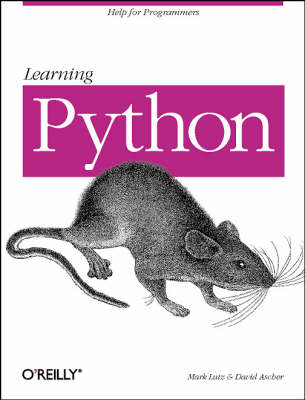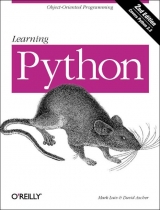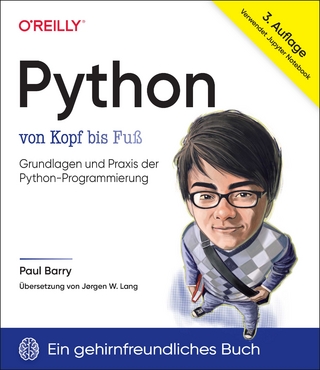
Learning Python
O'Reilly Media (Verlag)
978-1-56592-464-2 (ISBN)
- Titel ist leider vergriffen;
keine Neuauflage - Artikel merken
Learning Python is an introduction to the increasingly popular Python programming language. Python is an interpreted, interactive, object-oriented scripting language. Python is growing in popularity because: it is available on all important platforms - Windows NT, Windows 95, Windows 98, Linux, all major UNIX platforms, MacOS, and even the BeOS; it is open-source software, copyrighted but freely available for use, even in commercial applications; its clean object-oriented interface makes it a valuable prototyping tool for C++ programmers; and it works well with all popular windowing toolkits, including MFC, Tk, Mac, X11, and Motif. This book starts with a thorough introduction to the elements of Python: types, operators, statements, classes, functions, modules, and exceptions. By reading the first part of the book, the reader should be able to understand and construct programs in the Python language. In the second part of the book, the authors present more advanced information, demonstrating how Python performs common tasks and presenting real applications and the libraries available for those applications.
Mark Lutz is a software developer and a Python writer and trainer. He is the author of Programming Python and Python Desktop Reference, both published by O'Reilly & Associates. Mark has programmed a variety of Python systems, teaches courses about Python, and has been involved with the Python community since 1992. David Ascher is a hybrid scientist/software engineer/trainer. By day, he is a vision scientist; additionally, he spends a fair bit of his free time learning about computer science and teaching Python.
Preface. I. The Core Language 1. Getting Started Why Python? How to Run Python Programs A First Look at Module Files Python Configuration Details Summary Exercises. 2. Types and Operators Python Program Structure Why Use Built-in Types? Numbers Strings Lists Dictionaries Tuples Files General Object Properties Built-in Type Gotchas Summary Exercises. 3. Basic Statements Assignment Expressions Print if Tests while Loops for Loops Common Coding Gotchas Summary Exercises. 4. Functions Why Use Functions? Function Basics Scope Rules in Functions Argument Passing Odds and Ends Function Gotchas Summary Exercises. 5. Modules Why Use Modules? Module Basics Module Files Are Namespaces Import Model Reloading Modules Odds and Ends Module Gotchas Summary Exercises. 6. Classes Why Use Classes? Class Basics Using the Class Statement Using Class Methods Inheritance Searches Namespace Trees Operator Overloading in Classes Namespace Rules: The Whole Story Designing with Classes Odds and Ends Class Gotchas Summary Exercises. 7. Exceptions Why Use Exceptions? Exception Basics Exception Idioms Exception Catching Modes Odds and Ends Exception Gotchas Summary Exercises II. The Outer Layers. 8. Built-in Tools Built-in Functions Library Modules Exercises. 9. Common Tasks in Python Data Structure Manipulations Manipulating Files Manipulating Programs Internet-Related Activities Bigger Examples Exercises. 10. Frameworks and Applications An Automated Complaint System Interfacing with COM: Cheap Public Relations A Tkinter-Based GUI Editor for Managing Form Data Design Considerations JPython: The Felicitous Union of Python and Java Other Frameworks and Applications Exercises. III. Appendixes. A. Python Resources B. Platform-Specific Topics. C Solutions to Exercises. Index
| Erscheint lt. Verlag | 11.5.1999 |
|---|---|
| Zusatzinfo | Illustrations |
| Verlagsort | Sebastopol |
| Sprache | englisch |
| Maße | 178 x 233 mm |
| Gewicht | 600 g |
| Einbandart | kartoniert |
| Themenwelt | Informatik ► Programmiersprachen / -werkzeuge ► Python |
| Informatik ► Software Entwicklung ► Objektorientierung | |
| ISBN-10 | 1-56592-464-9 / 1565924649 |
| ISBN-13 | 978-1-56592-464-2 / 9781565924642 |
| Zustand | Neuware |
| Informationen gemäß Produktsicherheitsverordnung (GPSR) | |
| Haben Sie eine Frage zum Produkt? |
aus dem Bereich



